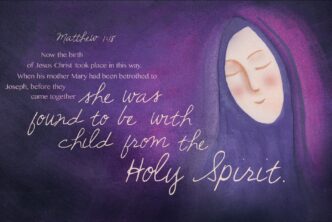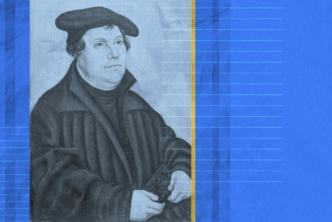All Scripture is important. All Scripture is true, but not all Scripture is meant to be read in the same way. Different kinds of literature have different expectations.
You wouldn’t read The Raven and angrily reply, “No, the Raven did NOT say that!” You understand that certain literary devices, like personification, are widely used in poetry.
In the same way that you would read Edgar Allan Poe differently than you read Jeff Shaara, you should expect different things from a Psalm than from Acts. Here are the four most common types of biblical literature and what you should expect from them.
Narrative | Story
Narrative tells a story. Sometimes that story is intended to be true, sometimes not, sometimes a little of both. Biblical narrative is the intended-to-be-true kind. You’ll see some redundancy, as certain books cover the same events from different perspectives for different audiences. Matthew, Mark, Luke, and John, for example, all tell the same story, but have subtly different points of emphasis. The book of Luke, written by a physician, gives a lot of technical detail, while Mark, heavily influenced by Peter’s type-A personality, is action-packed. When you read narrative, it’s important to remember who was writing and for what purpose.
When people read through the Bible from cover to cover for the first time, one of the biggest hangups they face happens in Genesis 5. The story has been humming along nicely and then all of a sudden: a genealogy, a whole chapter comprising nothing but name after name after name. Don’t be discouraged by these passages; instead, let them act as a reminder of the authors’ attention to detail.
Found in: Genesis, Exodus, Deuteronomy, Joshua, Judges, Ruth, 1 & 2 Samuel, 1 & 2 Kings, 1 & 2 Chronicles, Ezra, Nehemiah, Easter, Job, Daniel, Jonah (and in smaller sections throughout most of the prophets), Matthew, Mark, Luke, John, and Acts.
Secular equivalents: Iliad, The History of the Decline and Fall of the Roman Empire, and Flag of Our Fathers
Epistle | Letter
Some of the most well-read portions of Scripture are letters written from the early church fathers to believers in other cities. Just like letters that you or I would write today, these ancient letters tend to meander casually from topic to topic without hard-and-fast chapter breaks. The chapter/verse divisions were added later, so these books are best read as single streams of thought. There are exceptions, of course. Romans and Hebrews are quite a bit more systematic than the others.
The books of Luke and Acts are crossovers. They are written both as narratives, to tell a story, and as letters, addressed specifically to a Greek man called Theophilus.
Found in: Ecclesiastes, Luke, Romans, 1 & 2 Corinthians, Galatians, Ephesians, Philippians, Colossians, 1 & 2 Thessalonians, 1 & 2 Timothy, Titus, Philemon, Hebrews, James, 1 & 2 Peter, 1, 2 & 3 John, and Jude.
Secular equivalents: There aren’t many. While historians use original sources, journals, and personal correspondence to study history, there are not many examples of correspondence written with intent to share broadly.
Poetry | Art
Poetry is emotion in print. While there is still an element of sharing the truth with a reader, poetry is highly introspective. Especially in biblical poetry, you may see a writer work his way from a carnal mindset at the beginning of a passage, exhibiting emotions like jealousy, anger, bitterness and pride, to a more spiritual point of view at the end. Let these passages be permission for you to struggle with your faith a little—or a lot, like many of them did.
Poetry makes use of many literary devices that you’ll rarely find in other forms of literature. A literary device like parallelism can help you understand an idea by comparing it or contrasting it with another idea. Psalm 1:3–4 is an excellent example of parallelism.
Found in: Psalms and Ecclesiastes
Secular equivalents: The sonnets of Shakespeare, The Iliad, Where the Sidewalk Ends
Wisdom Literature | Advice
Wisdom literature is full of very helpful but very general advice. Many people can become confused when treating wisdom literature like a dogmatic promise. A classic example would be Proverbs 22:6. While often claimed as a divine promise, this verse is only intended to be a piece of conventional wisdom. Practically all wisdom literature is intended to be read in this way—generalized truth to which exceptions may occur.
Ecclesiastes, the ultimate crossover, is written as an addressed letter, in metered poetic style, while offering wisdom advice. This book could arguably be included in all three categories.
Found in: Proverbs and Ecclesiastes
Secular equivalents: The Art of War, The Works of Confucius, and Think and Grow Rich
So next time you’re reading the Faithlife Study Bible, stop for a moment before you start the work of interpretation. Ask yourself what sort of literature you’re dealing with. What expectations should you bring to the text?”
* * *
Serious Bible study is easier with serious Bible study software. The Faithlife Study Bible is a great place to start, but if you’d like to study in greater detail, Logos Bible Software is for you. Its powerful, intuitive tools and vast libraries are the perfect way to expand your understanding of the Scriptures. Learn more today.





